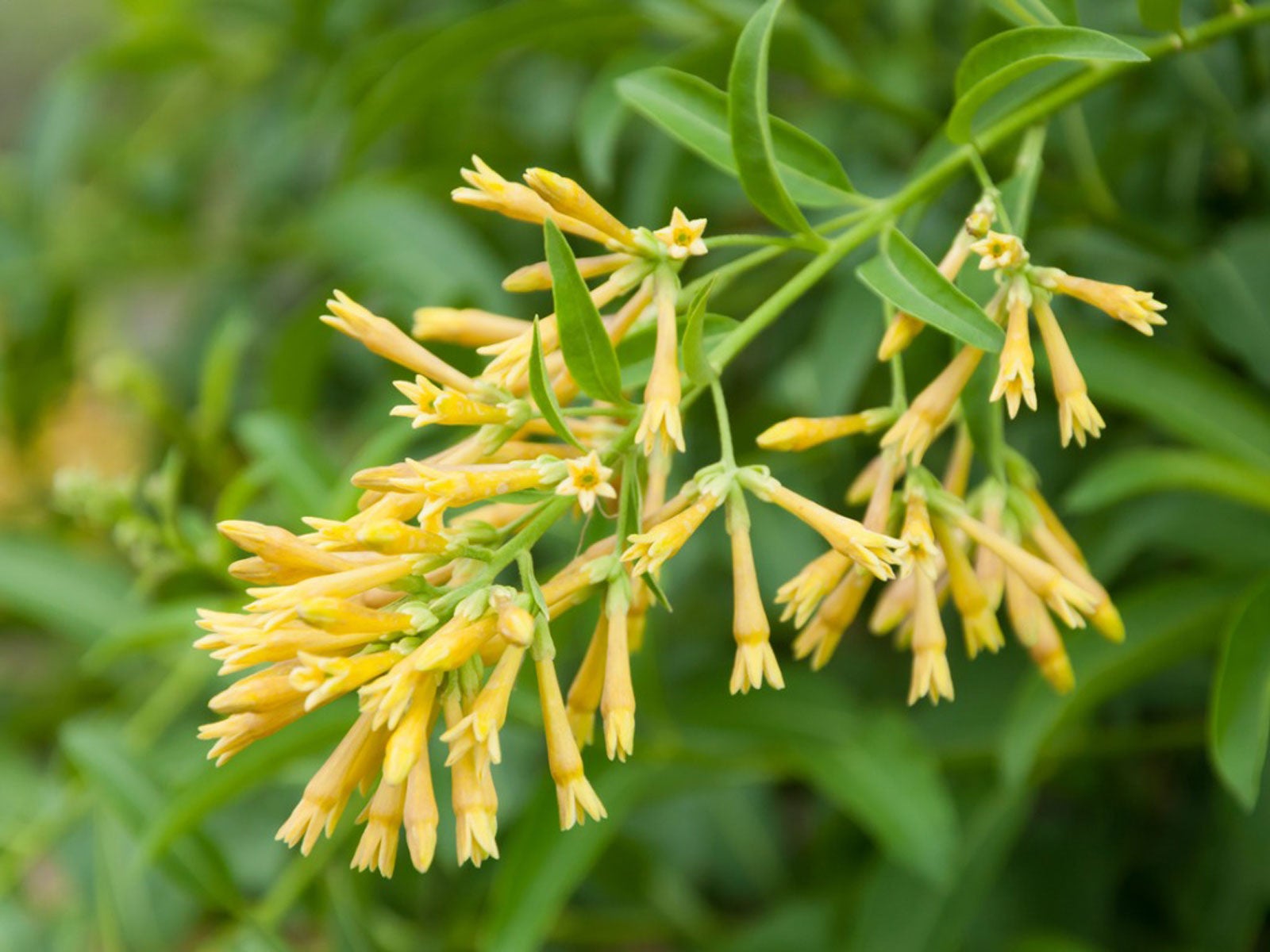Night Jasmine Information – Learn About Night Blooming Jasmine Care


“From plants that wake when others sleep, from timid jasmine buds that keep their odour to themselves all day, but when the sunlight dies away let the delicious secret out to every breeze that roams about.” Poet Thomas Moore described the intoxicating fragrance of night-blooming jasmine as a delicious secret because of its unusual bloom habits. What is night-blooming jasmine? Read more for that answer, as well as tips for growing night jasmine plants.
Night Jasmine Information
Commonly known as night-blooming jasmine, night-blooming jessamine, or lady-of-the-night (Cestrum nocturnum), it is not a true jasmine, at all, but is a jessamine plant of which are members of the nightshade (Solanaceae) family along with tomatoes and peppers. Jessamine plants are oftentimes referred to as jasmines because of their highly fragrant flowers and because their names are so similar. Like jasmine, jessamine plants can be shrubs or vines. Night-blooming jessamine is a tropical, evergreen shrub. Night-blooming jasmine grows 8-10 feet (2.5-3 m.) tall and 3 feet (91.5 cm.) wide. Its evergreen nature and tall but columnar growth habit make night-blooming jasmine an excellent candidate for privacy hedges and screens. It bears clusters of small, white-green flowers from spring through late summer. When the flowers fade, white berries form and attract a variety of birds to the garden. The overall appearance of night-blooming jasmine is nothing spectacular. However, when the sun sets, night-blooming jasmine’s small, tubular flowers open, releasing a heavenly fragrance throughout the garden. Because of this scent, night-blooming jessamine is commonly planted near the home or patio where its perfume can be enjoyed.
How to Grow a Night Jasmine
Night jessamine grows best in partial to full sun. Too much shade may cause a lack of blooms, which means a lack of the sweet fragrance its night blooms provide. Night-blooming jasmines are not particular about soil, but they do need to be watered regularly during their first season. Once established, night-blooming jasmine care is minimal and they are relatively drought tolerant. They are hardy in zones 9-11. In cooler climates, night-blooming jasmines can be enjoyed as potted plants, which can be moved indoors during winter. Plants can be pruned after flowering to shape or control their size. Night-blooming jessamine is a tropical plant, native to the Caribbean and West Indies. In its natural environment, the nighttime blooms are pollinated by moths, bats, and night-feeding birds.
Sign up for the Gardening Know How newsletter today and receive a free copy of our e-book "How to Grow Delicious Tomatoes".

Darcy is a former contributor to Gardening Know How. She is a professional landscape designer and gardening writer with experience in plant sales. An avid gardener, Darcy has a passion for sharing practical tips to help others grow.